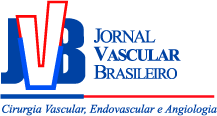Needle visualization during ultrasound-guided puncture: image optimization
Visualização da agulha durante punção guiada por ultrassom: otimização de imagem
Augusto Cézar Lacerda Brasileiro; Aeudson Víctor Cunha Guedes e Silva; Ariana Lacerda Garcia; Beatriz Ribeiro Coutinho de Mendonça Furtado; Frederico Augusto Polaro Araújo Filho; Laís Nóbrega Diniz; Leonardo César Maia e Silva; Lorena Agra da Cunha Lima
Abstract
Keywords
Resumo
Resumo:
Palavras-chave
References
1 Seleznova Y, Brass P, Hellmich M, Stock S, Müller D. Cost-effectiveness-analysis of ultrasound guidance for central venous catheterization compared with landmark method: a decision-analytic model. BMC Anesthesiol. 2019;19(1):51.
2 Chapman GA, Johnson D, Bodenham AR. Visualisation of needle position using ultrasonography. Anaesthesia. 2006;61(2):148-58.
3 Sites BD, Brull R, Chan VW, et al. Artifacts and pitfall errors associated with ultrasound-guided regional anesthesia. Part I: understanding the basic principles of ultrasound physics and machine operations. Reg Anesth Pain Med. 2007;32(5):412-8.
4 Scholten HJ, Pourtaherian A, Mihajlovic N, Korsten HHM, A Bouwman R. Improving needle tip identification during ultrasound-guided procedures in anaesthetic practice. Anaesthesia. 2017;72(7):889-904.
5 Saugel B, Scheeren TWL, Teboul JL. Ultrasound-guided central venous catheter placement: a structured review and recommendations for clinical practice. Crit Care. 2017;21(1):225.
6 Lamperti M, Biasucci DG, Disma N, et al. European Society of Anaesthesiology guidelines on peri-operative use of ultrasound-guided for vascular access. Eur J Anaesthesiol. 2020;37(5):344-76.
7 Chin KJ, Perlas A, Chan VW, Brull R. Needle visualization in ultrasound-guided regional anesthesia: challenges and solutions. Reg Anesth Pain Med. 2008;33(6):532-44.
8 Schafhalter-Zoppoth I, McCulloch CE, Gray AT. Ultrasound visibility of needles used for regional nerve block: an in vitro study. Reg Anesth Pain Med. 2004;29(5):480-8.
9 Takatani J, Takeshima N, Okuda K, Uchino T, Hagiwara S, Noguchi T. Enhanced Needle Visualization: advantages and indications of an ultrasound software package. Anaesth Intensive Care. 2012;40(5):856-60.
10 Luz FM, Yacoub VRD, Silveira KAA, Reis F, Dertkigi SSJ. A model for training ultrasound-guided fine-needle punctures. Rev Assoc Med Bras. 2022;68(7):948-52.
11 Kobayashi Y, Hamano R, Watanabe H, et al. Preliminary in vivo evaluation of a needle insertion manipulator for central venous catheterization. Robomech J. 2014;1(1):18.
12 Miura M, Takeyama K, Suzuki T. Visibility of ultrasound-guided echogenic needle and its potential in clinical delivery of regional anesthesia. Tokai J Exp Clin Med. 2014;39(2):80-6. PMid:25027252.
13 Kendall JL, Faragher JP. Ultrasound-guided central venous access: a homemade phantom for simulation. CJEM. 2007;9(5):371-3.
14 Kline J. Reliable needle visualization during ultrasound guided regional and vascular procedures: a simple solution to steep angle echogenicity loss with any ultrasound system, based on target depth. Anesthesia Journal. 2015;3(2):1-4.
15 Bai B, Tian Y, Zhang Y, Yu C, Huang Y. Dynamic needle tip positioning versus the angle-distance technique for ultrasound guided radial artery cannulation in adults: a randomized controlled trial. BMC Anesthesiol. 2020;20(1):231.
16 Reusz G, Sarkany P, Gal J, Csomos A. Needle-related ultrasound artifacts and their importance in anaesthetic practice. Br J Anaesth. 2014;112(5):794-802.
17 Nichols K, Wright LB, Spencer T, Culp WC. Changes in ultrasonographic echogenicity and visibility of needles with changes in angles of insonation. J Vasc Interv Radiol. 2003;14(12):1553-7.
18 Maecken T, Zenz M, Grau T. Ultrasound characteristics of needles for regional anesthesia. Reg Anesth Pain Med. 2007;32(5):440-7.
Submitted date:
03/28/2023
Accepted date:
05/01/2023

